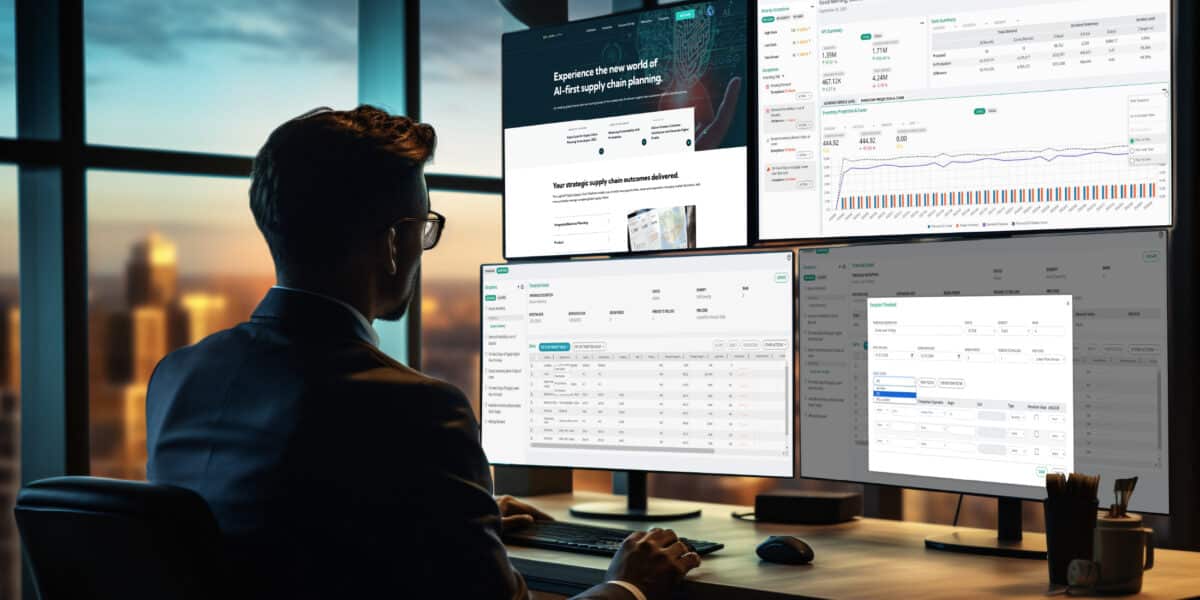
Add to these factors such as razor-thin margins, SKU-proliferation, globalization, and products that tend to be heavy, bulky and/or expensive to move and it quickly becomes apparent why process manufacturing supply chains are very challenging.
These challengers are surmountable. There are several key ingredients in formulating a winning process manufacturing supply chain. This is where you should focus your precious time and resources to create the greatest value:
Accurate demand forecasts lay the foundation for an effective supply chain. Chemical manufacturers are faced with shrinking margins and cannot afford to put the wrong product in the wrong location at the wrong time. A process manufacturer must rely on forecasts because raw ingredient acquisition and manufacturing lead-times are almost always longer than the order lead-time. Too many companies still rely on inadequate capabilities provided by spreadsheets and basic ERP forecasting solutions. Leading demand planning solutions apply science to deliver a better forecast, including “best-fit” algorithms that automatically select the right forecasting approach for each stage of a product’s lifecycle.
Supply chain planning systems receive the forecast as input and plans the purchasing of materials, making of products, and overall operation of your supply chain. The system helps you improve availability, reduce costs, and manage your network of manufacturing facilities and sales channels to hit ever-increasing profit targets. Making the optimal use of critical resources, while meeting customer and forecasted demands, requires a degree of synchronization across your supply chain that is difficult if not impossible to do without an integrated supply chain planning system.
Aligning and integrating key performance metrics across the extended supply chain can be difficult. Complex global supply chains have many moving parts, each with their own challenges and often conflicting objectives. Data from different regions or units may be impossible to make sense of at a consolidated corporate level. It’s true that you can’t manage what you don’t or can’t measure. I would add that a picture is worth a thousand lines of data. You need to visually display your integrated key performance measurements to achieve alignment, build consensus, and get everyone marching to the same plan.
Higher-level value-added priorities. Inventory tends to be a very visible supply chain cost to senior management. How much inventory a company has is listed right there as a current asset on the balance sheet. So, although inventory tends to be a symptom of other supply chain factors; forecast accuracy, customer service objectives, supply chain network design, transportation mode selected, etc. it is often targeted for reduction. Again a system-wide approach to inventory optimization is the way to go. To drive down inventory and improve customer service turn to multi-echelon inventory optimization (MEIO) which considers all usable inventory across the supply chain and determines how much is needed, and where, to meet stated customer service levels at the lowest cost. Multi-echelon inventory optimization has been known to enable a reduction in inventory by 10% to 30%, while boosting service levels. Definitely something every supply chain professional should want in their toolkit.
Another value-added tool that should be looked at is multi-mode freight optimization. One of the biggest supply chain expenses for any process manufacturer is transportation of ingredients to plants and transportation of finished products to customers. It doesn’t take a genius to figure out you want to attack the largest cost areas first. A system enabled process that drives optimal multi-model shipment planning and carrier selection in a single optimization step delivers a more cost-effective overall transportation plan while meeting customer delivery requirements. This industry “best-practice” produces the best possible carrier selection decisions while considering constraints such as rates, equipment availability, dynamic pooling, carrier performance, and more. It is not unusual to reduce transportation costs by as much as 30%. When considering transportation costs can represent 40% to 60% of total logistics expenditure we are looking at very significant dollar savings. Talk about value-add!
These are just a few of the ingredients needed to formulate a winning supply chain strategy? What else would you add?
For additional information, download the white paper: Process Chemical Supply Chain Planning: Finding the Perfect Formula


